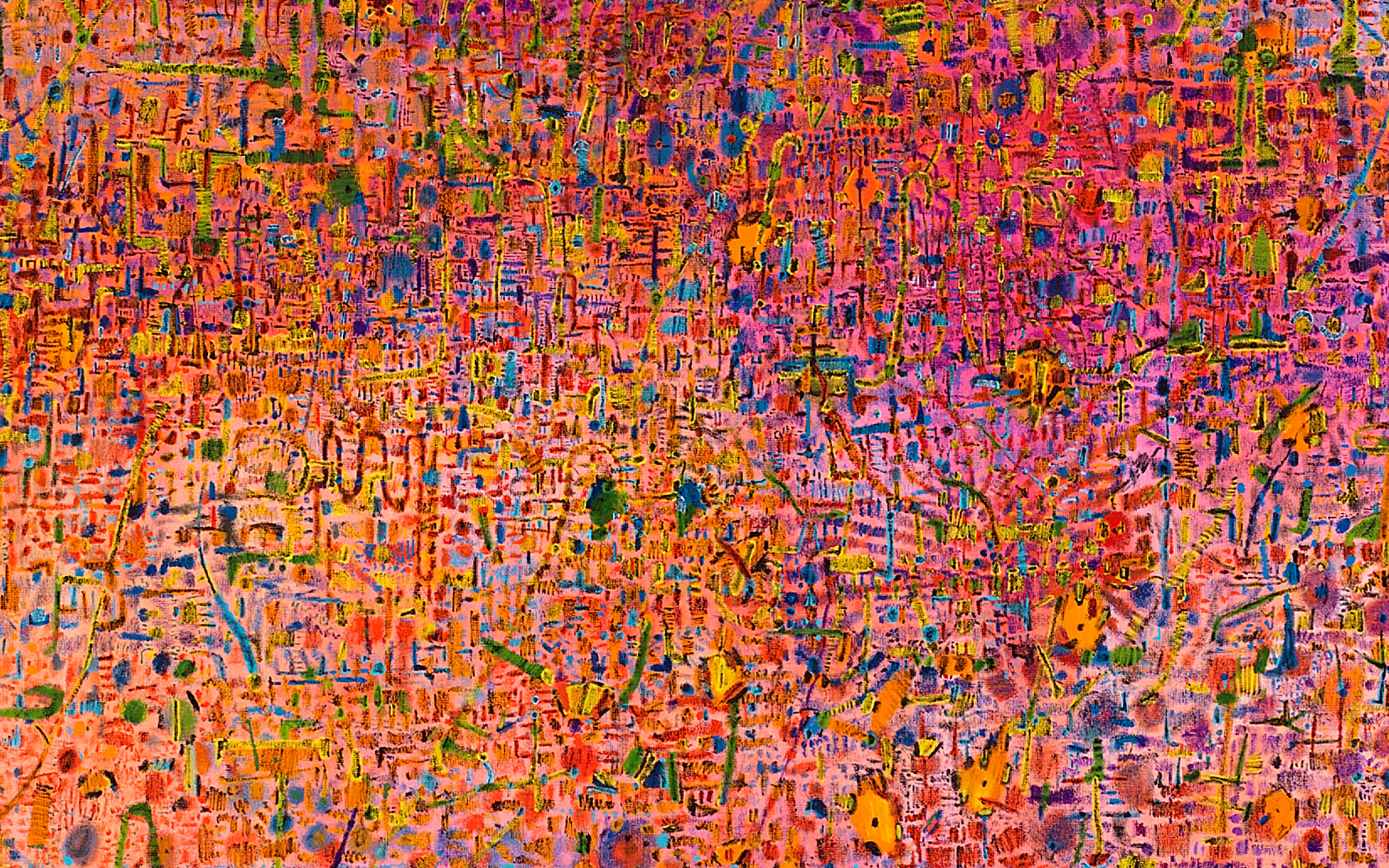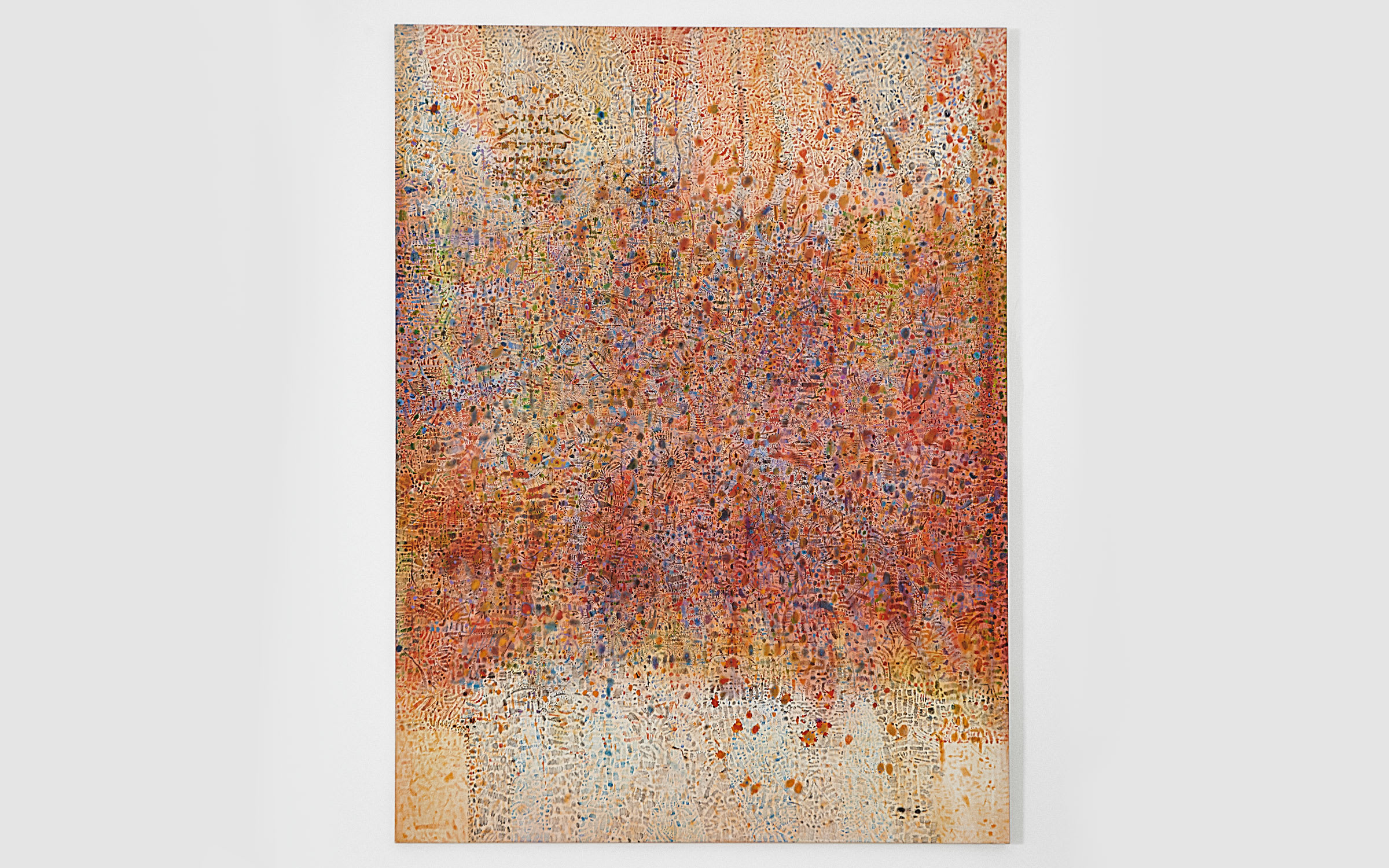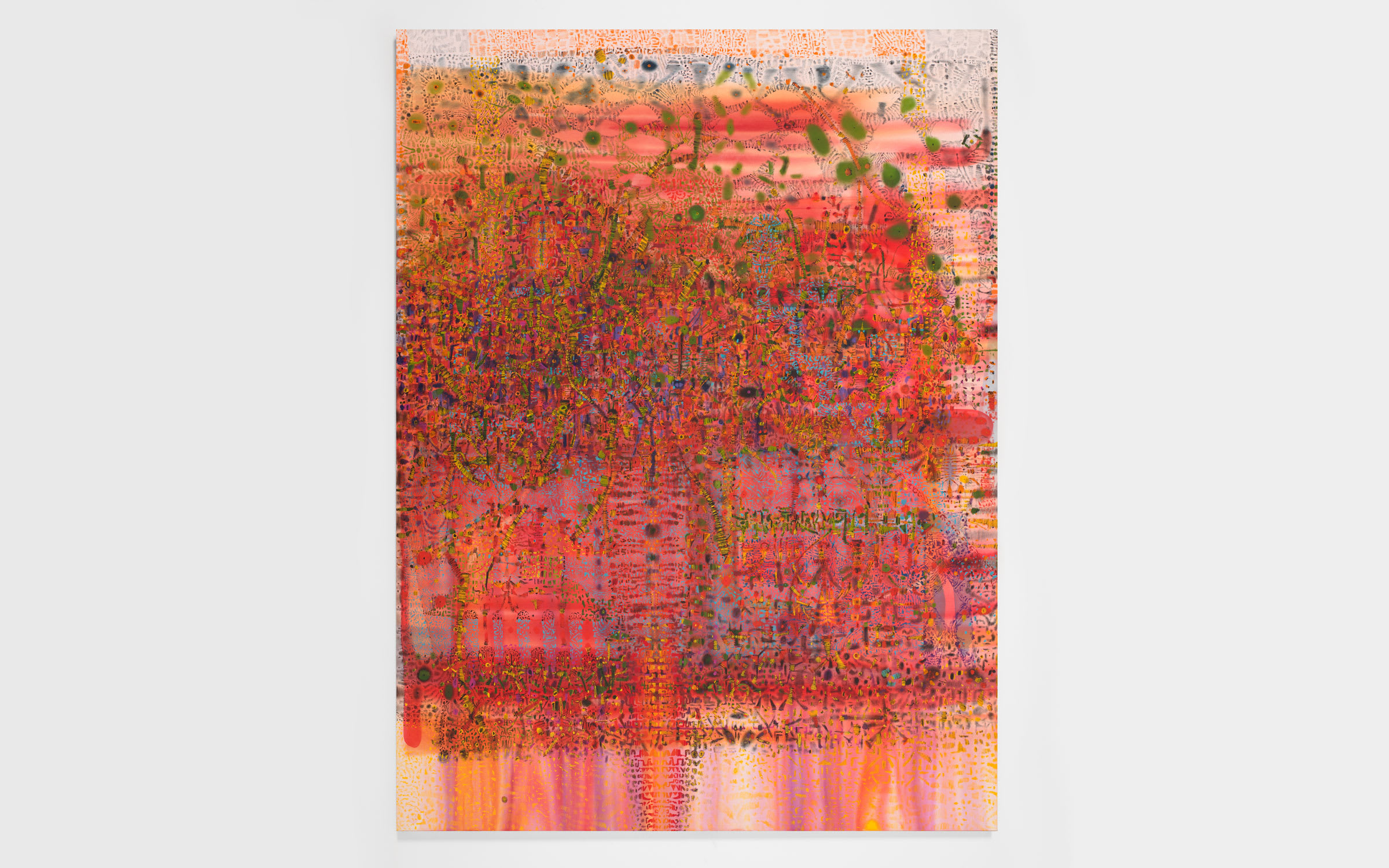Tomm El-Saieh: Abstract painting is a universal language everyone can connect with
Elisa Turner visits the Miami and Port-au-Prince based artist in his studio
Log in and subscribe to receive Art Basel Stories directly in your inbox.
Paintings by Tomm El-Saieh meld strategies of Modernist abstraction with subtle echoes of the rich color and interlacing patterns found in Haitian Vodou imagery. El-Saieh, who was born in Haiti and is based in Miami and Port-au-Prince, Haiti, is of Haitian, Palestinian, and Israeli descent. His work reflects both his cultural heritage and an understanding of how Haitian figurative art is often embedded with references to Haitian history and the lore of voodoo spirits. In 1991, at age 7, El-Saieh left Haiti with his parents for Florida, as political conditions worsened when President Jean-Bertrand Aristide was overthrown by the Haitian army; he now returns often. Belonging to a family living in Haiti for five generations, El-Saieh feels deeply connected to the country and its culture, even though his focus on abstraction may seem counter to Haitian traditions.

Intricate layers of color and line in El-Saieh’s abstract paintings, which will be on view during Art Basel Miami Beach at Central Fine gallery, recall ‘all over’ Abstract Expressionist compositions by Jackson Pollock, while also bringing to mind the pioneering ideas of Hans Hofmann and Josef Albers. Paintings by Hofmann and Albers illustrate how various colors and shapes, depending on their placement, can appear to advance or recede in space. ‘You can use saturation and non-saturation [of color] for push and pull, also the blurriness and sharpness,’ El-Saieh said, referring to Hofmann’s term to describe optical illusions of movement forward and backward in space that can animate a flat canvas.


For the catalog for his solo show held at ICA Miami from December 2017 until spring 2018, El-Saieh cited the elements of Haitian culture shaping his art. They include an image of a crowded market, a popular subject for Haitian paintings and an example of the ‘all over’ composition he favors. Another is a photograph of women in white dancing to voodoo drumming. They reflect his early interest in black and white paintings and loosely evoke the rhythmic patterns in Song and Dance (2018), where minute shapes overlay vertical streams of pinks, oranges, and yellows. Reading features constellations of infinitesimal hieroglyphic forms floating over passages of purple, pink, and gold. Such overlapping patterns recall the graceful veve drawings used to invoke spirits in Vodou rituals, which are also cited in the catalog for his ICA Miami show. These delicate ritual drawings comprise a unique mosaic of shapes that include hearts, crosses, and stars. As his paintings evolve, such shapes continue to be beautifully transformed in constellations of color and pattern.
Tomm El-Saieh's work will be on view at Central Fine gallery during Art Basel Miami Beach, December 5th to 8th, 2019.
Top image: Tomm El-Saieh, Reading (Detail). Acrylic on. Canvas, 96 x 72 inches, 2018, (Private collection) Photo by Armando Vaquer, courtesy of CENTRAL FINE.

